Our son, who’s a junior in high school, opened up last week about how difficult school is for him academically and how distressed he’s been feeling. I don’t want to get into the details of his situation, but I mention it because our talk prompted me to draw on experiences and lessons learned over a decade of ultrarunning.
When I talked to him about the challenges he faces, I offered some strategies for coping that I’ve found helpful when feeling overwhelmed, both in ultras and in real life.
Take it aid station to aid station. Any enormous, stressful task becomes more manageable when divided into smaller segments. “Just make it to the next aid station” is the best thing to tell runners who want to drop out mid-ultra, because it gets them thinking about the shorter distance to the next checkpoint, rather than contemplating all the miles to the finish.
“Just do what you can to make it through this week,” I told my son. In other words, don’t worry about the months ahead; do your best to take care of what you have to do right now.
When I embarked on writing my book,I couldn’t fathom how to flesh out the rough outline and fully develop all the chapters. I felt frozen with uncertainty about how to structure the second half. I played on the aid-station-to-aid-station adage with “just take it chapter to chapter,” which on extra-hard days became, “just take it paragraph to paragraph.”
I love this passage from Ann Lamott’s Bird by Bird:
“E.L. Doctorow once said that ‘writing a novel is like driving a car at night.You can see only as far as your headlights, but you can make the whole trip that way.’ You don’t have to see where you’re going, you don’t have to see your destination or everything you will pass along the way. You just have to see two or three feet ahead of you.”

Break it down, take it step by step. It’s supposed to be hard. That’s what I told myself to get to a podium finish in the self-supported, 170-mile 2014 Grand to Grand Ultra.
It’s supposed to be hard. When I hit a rough patch mid-ultra, I remind myself that low points are part of the process. The difficult times and uphill climbs make the good times and downhills feel even better.
As parents, our kids’ happiness is paramount, but shielding them from adversity carries risk. When our kids are struggling, frustrated and feeling inadequate, our instinct is to make things better, fix their problems and soothe their feelings. Those good intentions, however, deprive them of the opportunity to learn how to fix things on their own and to muddle through imperfectly, ultimately gaining independence and strength.
But “hard” in an ultra-distance trail race shouldn’t be impossible or stupidly dangerous. If the going gets so rough, on the trail or in life, that you’re undoubtedly risking your health, then stop or take a different route.
Use your crew. For extra-long, extra-arduous ultras, runners assemble a crew and perhaps recruit a pacer. They ask for and accept help at aid stations. Their individual endeavor becomes a team effort. Countless have said after the finish, “my crew got me through.”
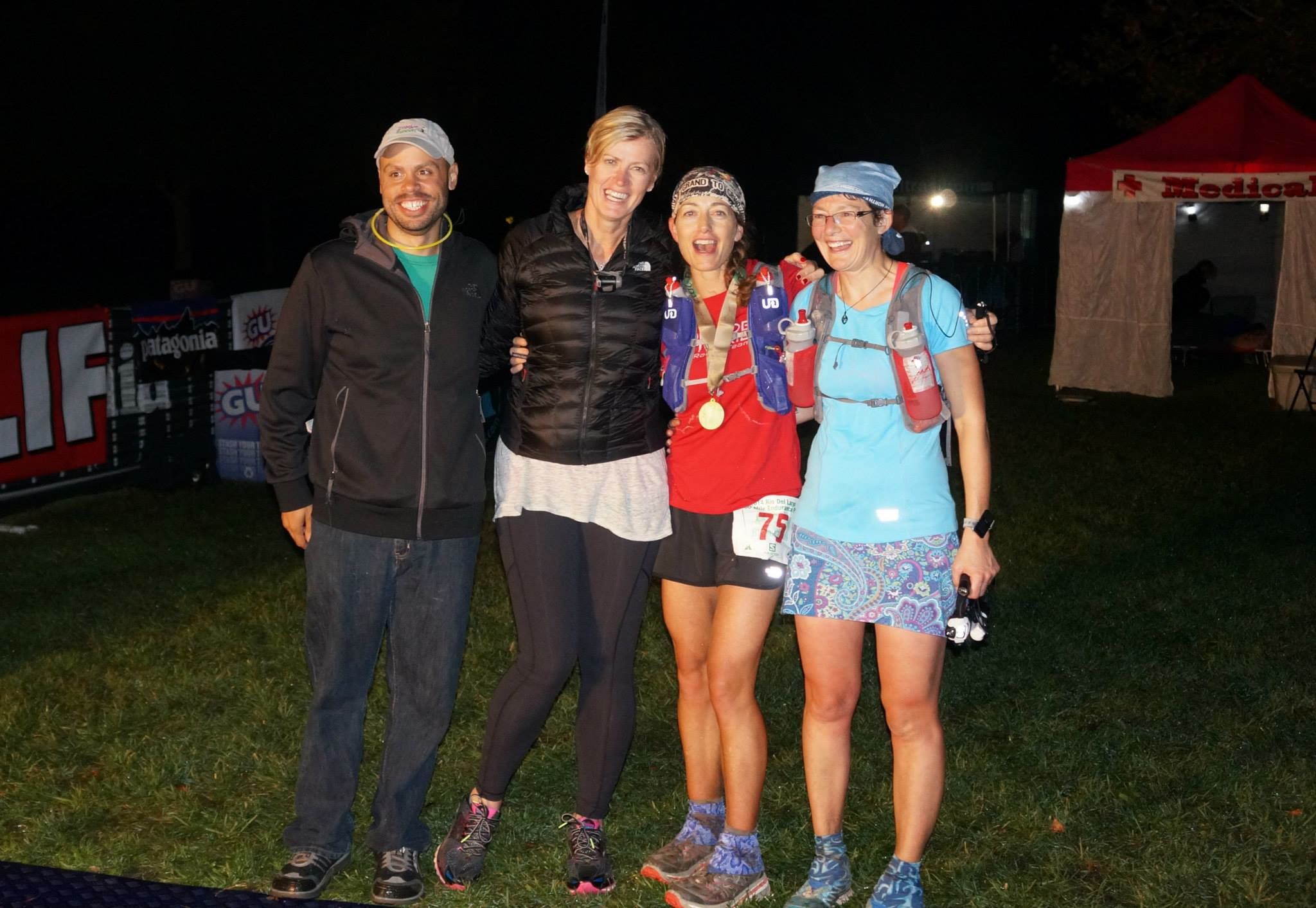
Nate and Sabine on my left, Clare on my right—what a team! My crew got me through my first 100M, the 2014 Rio Del Lago, sub-22 hours.
Don’t let pride prevent you from getting the assistance you may need. If you’re struggling in school or career, then you may need additional resources to succeed.
Maybe you just need to rest and eat something. Ultras condition us to push, push, push and keep going no matter what. As a result, it’s common to feel utterly depleted at a midway point. If you’re exhausted and bonking, but the finish is nowhere in sight, then taking a break to rest and refuel—but not dropping out completely—can be the wisest thing to ensure a finish.
In real life, when stress and sleep deprivation lead to an exaggerated level of anxiety and negative thinking, it’s time to take a break and refocus on wellness. It’s remarkable how the simple act of getting some sleep and good nutrition can make you feel better and more capable of accomplishing whatever you need to do.
Run your own race, go your own pace. Serious competitors remain aware of their position relative to other competitors from start to finish, and they work to catch and pass those ahead. Consequently, they risk going too fast and then blowing up as they struggle to keep up with the leaders. Generally speaking, in a race as in life, it’s better to find and follow your own sustainable pace and your own race plan regardless of the speed others are going.
In the 2016 Lake Sonoma 50 (as recounted in this podcast), I was racing to improve my previous time and meet my personal goals rather than trying to beat the others. I therefore thought of the competitors racing by my side as friends who would help carry me along. The group dynamic felt collaborative and inspiring instead of adversarial, even when those better, faster runners surpassed me. I ended up having a nearly perfect race and meeting my stretch goal for time.
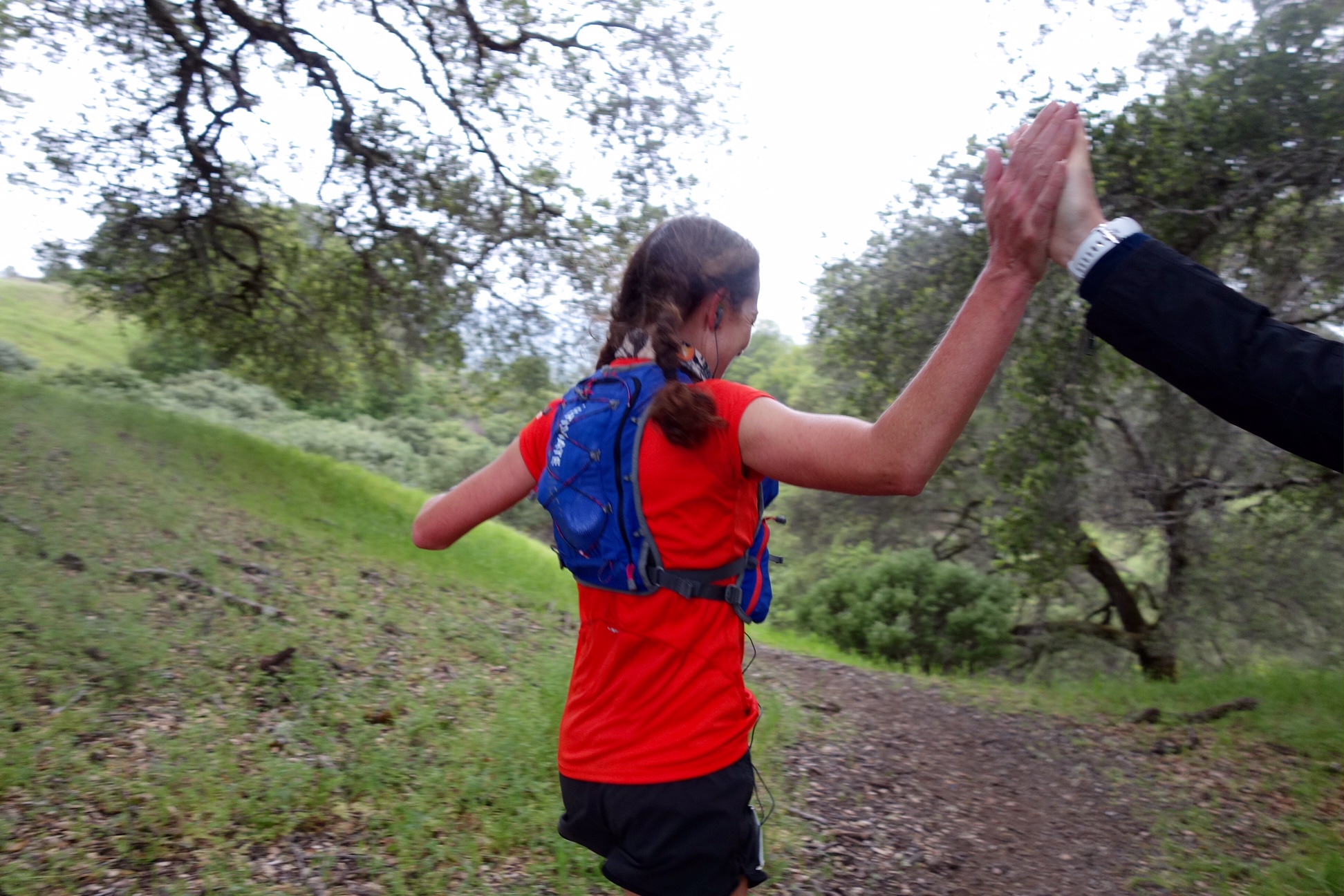
Good vibes and camaraderie while racing the 2016 Lake Sonoma 50.
The lesson is, gain inspiration and motivation from the high achievers around you, but try not to compare yourself to them. Endeavor to do your own thing, what’s right for you.
As my heart ached listening to my son describe his stress and his come-from-behind effort, I closed my eyes and visualized runners struggling to finish an ultra with only minutes to spare before the event’s cutoff time. Many of the competitors who finished much earlier had stayed to cheer on the back-of-the-pack runners.
Replaying this scene in my head helps me react with empathy and optimism when confronted with his challenges, and to respect and love him fully and unconditionally exactly as he is rather than wishing he performed at a higher level.
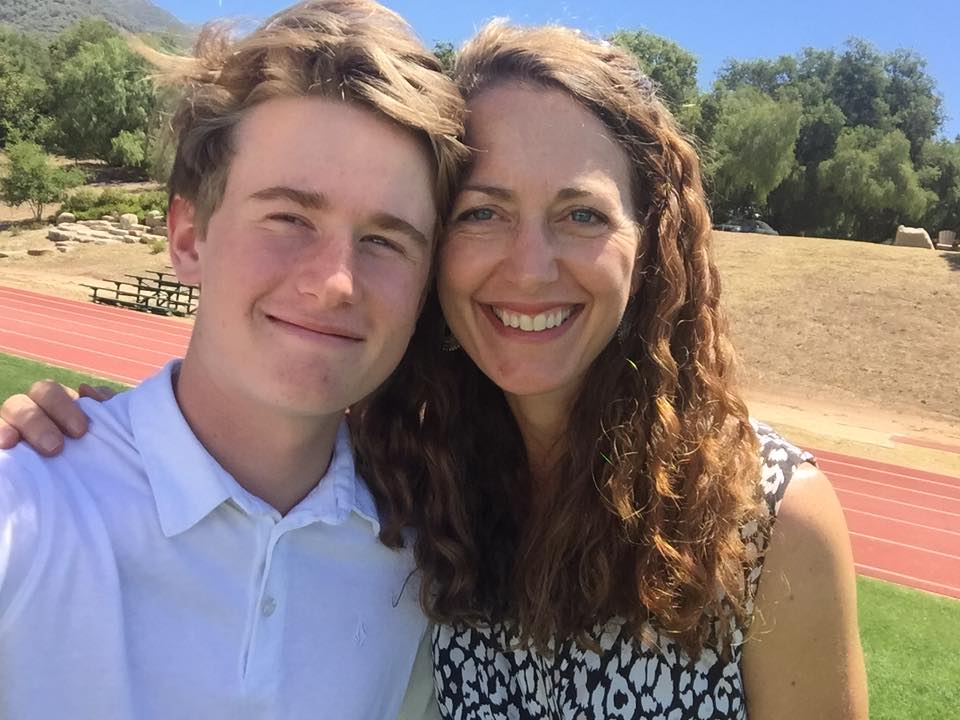
I love this kid so much.
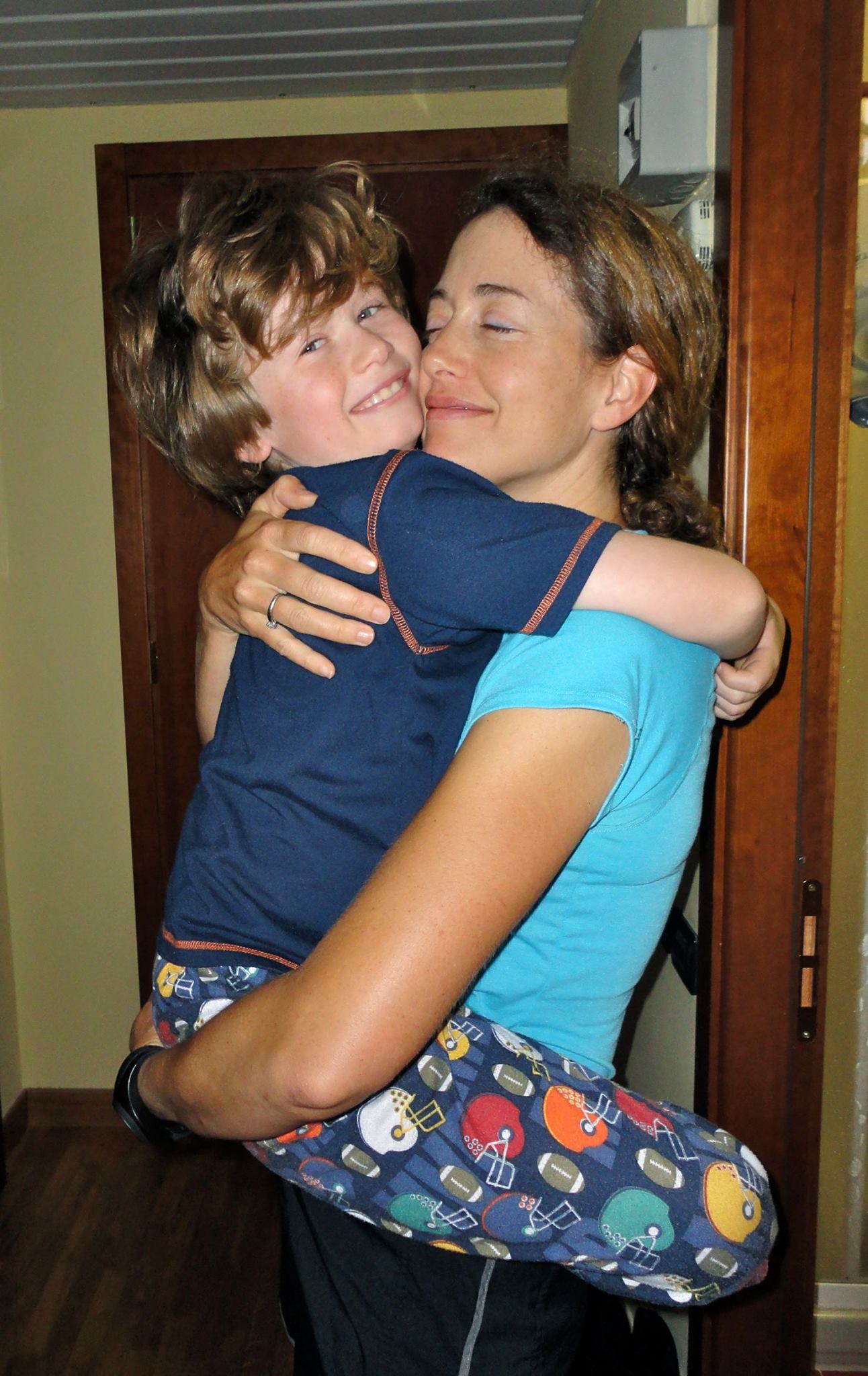
Hug and hold your kids while you can, before they get too big and move away, as I did in this pic from 2010 when Kyle was 8.
Mid- to back-of-the-pack finishers in our sport generally earn and deserve a great deal of respect, because going the distance is more difficult, and takes a lot more time, for them than for those who finish in the top half. Perhaps they lack the natural talent of the speedier finishers, or they have a less-than-optimal body type. Or perhaps they haven’t had the ability or support to train as much as they should. Maybe they became injured along the way.
In any case, they struggle mightily, doubt whether they can finish, consider quitting—but, ultimately, they muddle through, find it within themselves to sprint toward the finish, and later on feel that the experience was worth the effort. Their hard-fought finish builds grit and character, and often results in great stories to tell.
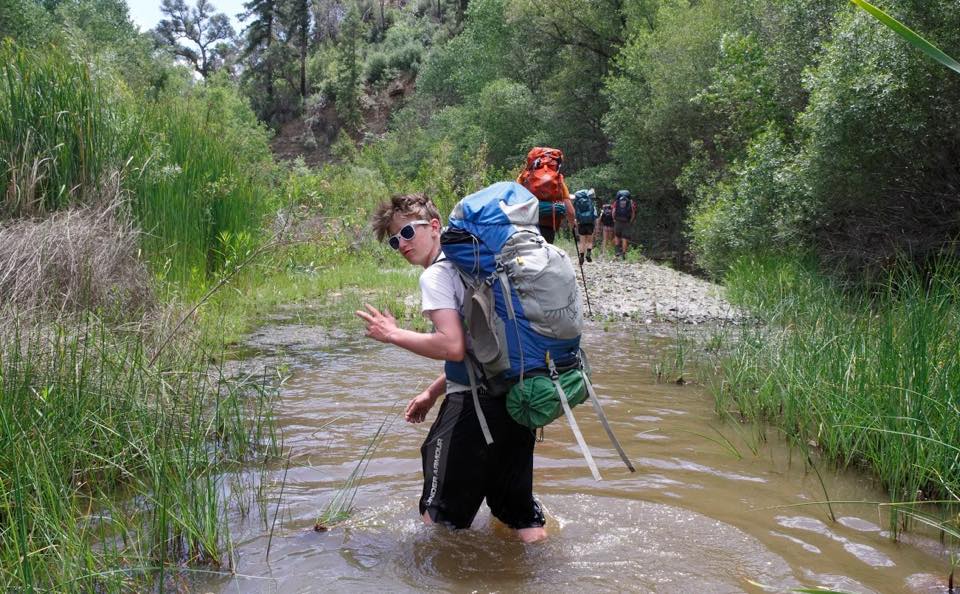
The trail is a great teacher. My son got some good lessons here.
“Hang in there … you can do it … dig deep … you’re doing great … take it step by step and you’ll get there … it’ll be worth it in the end …”
The phrases we use to encourage long-distance runners to make it to the finish are worth recalling and using when someone you love hits the wall or enters the pain cave in life.

Oh my goodness – as a mother of three younger kids (and being an older mom) I loved this post. It reminds me of how to be supportive and helpful to my kids and others (including myself). For everyone who is facing struggles – these are really good lessons.
Love this post. Especially since I also have a son who is a Junior in high school in a very competitive academic environment, facing similar stressors. It can be even tougher when they see an older sibling sail through. Great advice to apply to ultras and life-especially run your own race.
Beautiful, Sarah. A whole lotta wisdom here. Thank you for sharing this, and all you’ve learned through running. (And, what you’ve learned through parenting, and deep involvement in your son’s school.)
Great post Sarah, thanks!
As a Learning Center Coach at a private college prep boarding school for 9 years- you nailed it. Nice post and passed it along to my school. The biggest take away is help from a crew- teacher, coach, parent are essential to progress and support. We focus on academic behaviors, self-awareness, and self-advocacy in our program- all can be translated to your post in some way. Great work and enjoy reading your blog=)
Thank you and your son for sharing these valuable lessons here.